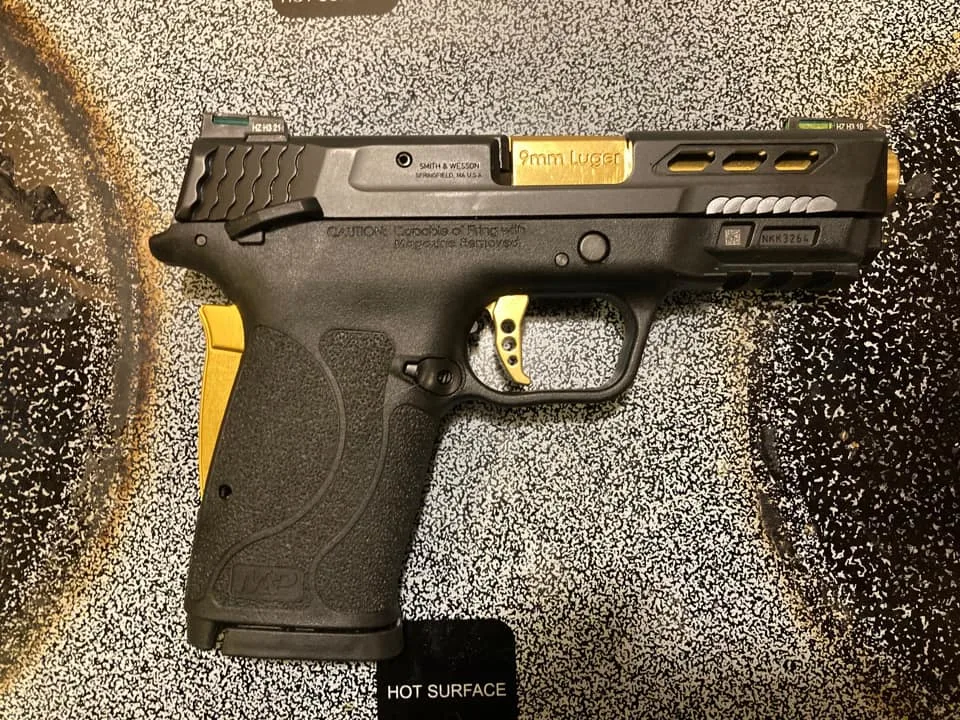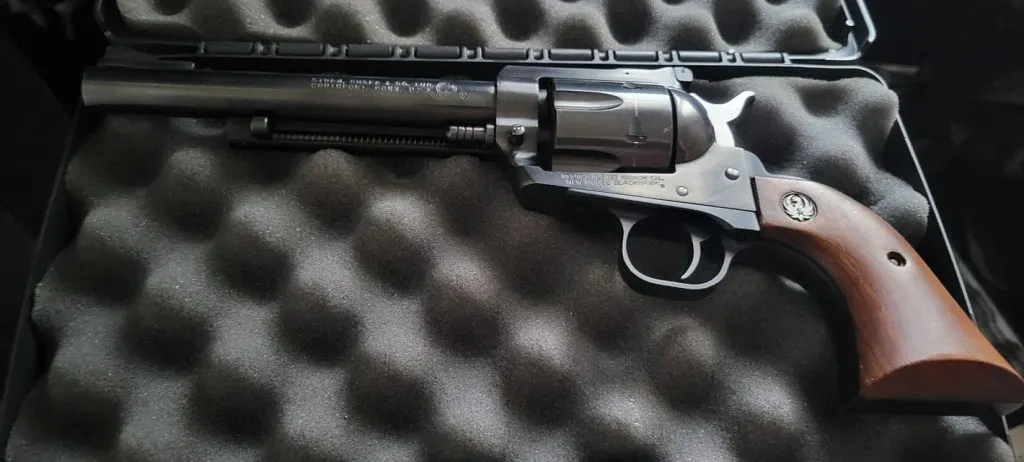Safety is paramount when handling firearms, handguns included. Mishandling them puts you and anyone within range at risk and can easily lead to accidental injury or even death. One of the most common forms of mishandling is dropping a handgun. While this is rarely done on purpose, it’s important to know whether it can result in an accidental discharge.
The odds of a handgun going off when dropped are slim, especially if it’s a modern model. This is thanks to the inclusion of several safety measures that were specifically designed to prevent accidental discharge, amongst other risks, over the course of numerous drop tests conducted by the manufacturer.
In this article, we will explain how a handgun could go off if dropped (despite it being highly unlikely) and what measures you can take to help ensure this doesn’t occur.

Is There a History of Handguns Going Off When Dropped?
To reiterate, it is almost impossible for a modern handgun in decent condition to accidentally discharge when dropped. However, there is some precedent to this concern.
If you’re thinking to yourself that this type of thing happens all the time on television and in films, we’re here to tell that this is a highly dramatized event that has little basis with reality.
Despite it happening much more infrequently in everyday life, there are reports on occasion of a handgun or other type of firearm going off after being dropped. One example was the Sig Sauer P320.
Despite winning the U.S. Army’s Modular Handgun System competition in January 2017, more than 100 reports stated that the firearm was not drop-safe and had a defective design that allowed it to go off upon impact after falling.
Several lawsuits were filed, including one made by a Connecticut police officer (source: popularmechanics) who claims he was critically injured by his Sig 320 handgun after it had been dropped.
Other individuals who contributed to this complain included several law enforcement officers, combat veterans, detectives, and other highly trained personnel, demonstrating that the accidental discharges were not from improper use or lack of experience with gun use and safety.
Here’s a news story covering a handgun that fired when dropped:
I use either Brownells, Palmetto State Armory, or Optics Planet to buy parts, that way I always know what I’m getting and that it will actually show up.
What Causes A Handgun to Go Off When Dropped?
The Sig Sauer P320 incident demonstrates one possible explanation of how a handgun could go off when dropped.
If its design doesn’t have the necessary safety components (ex. a firing pin, trigger guard) or these mechanisms are damaged and/or defective, then it is more likely that the gun will accidentally discharge upon impact when dropped.
- Although this does happen on occasion with modern firearms, you’re far more likely to experience it with older handguns made prior to 1968.
- This was the year that the federal Gun Control Act was passed, introducing drop tests and various safety criteria that guns had to meet before being viable for sale.
It was not uncommon for guns that were made before this act was passed to lack the necessary safety and design features that would prevent accidental discharge.
However, it is also possible that the drop somehow pulls the trigger (ex. it snags on something as it falls) or provides enough force for the firing pin to strike the primer of the cartridge. These are instances companies cannot always account for even with extensive testing.
What Safety Features Make Guns Drop-Safe?
Handguns are some of the most popular guns for self-defense, but it is essential to make sure they are safe and reliable when using them. It is important to understand the safety features that make handguns drop-safe, as this will allow you to trust the weapon in potentially dangerous situations.
- These typically include a mechanical block that ensure the handgun’s firing pin, hammer, or striker can’t connect with the primer of a chambered cartridge until the trigger is pulled.
- This can come in the form of a transfer safety bar or a firing pin block.
Other drop-safes include striker safeties, manual safeties and grip safeties that ensure the gun won’t fire unless it is gripped properly by an authorized user. By learning more about these safety mechanisms, gun owners can make sure they have adequate safety measures in place while carrying a firearm.

How to Help Ensure Your Handgun Doesn’t Go Off When Dropped
Before we delve into the safety tips and other precautions you can take to mitigate or completely prevent this event from occurring, we’d like to make the distinction between accidental discharge and negligent discharge.
An accidental discharge occurs when your handgun fires unintentionally due to mechanical failure, equipment malfunction, or something of that nature.
Negligent discharge is when your handgun fires because the user has violated on or more of the Four Universal Firearms Safety Rules (source: nssf.org), which include:
- Always keeping the firearm pointed in a safe direction
- Treating all guns as though they are loaded
- Keeping your finger off the trigger until you are ready to shoot
- Always being sure of your target and what is beyond it
Realistically, follow these safety rules would be the first step to ensuring your gun doesn’t fall in the first place and potentially result in an accidental discharge.
Precautions to Prevent Accidental Discharge
Beyond that, precautions you should take include:
- Examining your handgun for signs of damage or malfunction that might cause an accidental discharge
- Safely testing your firearm to ensure it is firing properly
- Performing regular gun maintenance, such as cleanings and replacing worn or damaged components
- Examining your holster, clothing, and other attire or accessories for things that might snag on your handgun
As we mentioned previously, accidental discharge isn’t usually caused by the individual handling the handgun. It often comes down to manufacturing mistakes or poor design on the company’s part, but the owner can be responsible if they are not keeping their handgun in prime condition for firing.
Following the precautions listed here, in addition to the essential handling safety rules, will help reduce the possibility that you will ever experience an accidental discharge, but we can’t guarantee it will never happen.
I use either Brownells, Palmetto State Armory, or Optics Planet to buy parts, that way I always know what I’m getting and that it will actually show up.
Final Thoughts
As much as we’d like to state that all handguns are completely safe and drop-proof, there are circumstances where they can accidentally discharge when dropped.
While this is much more common with older models, even the newest models are at risk. Educating yourself on prevention, proper handling, and maintenance are the best ways to limit this unpleasant incident.
